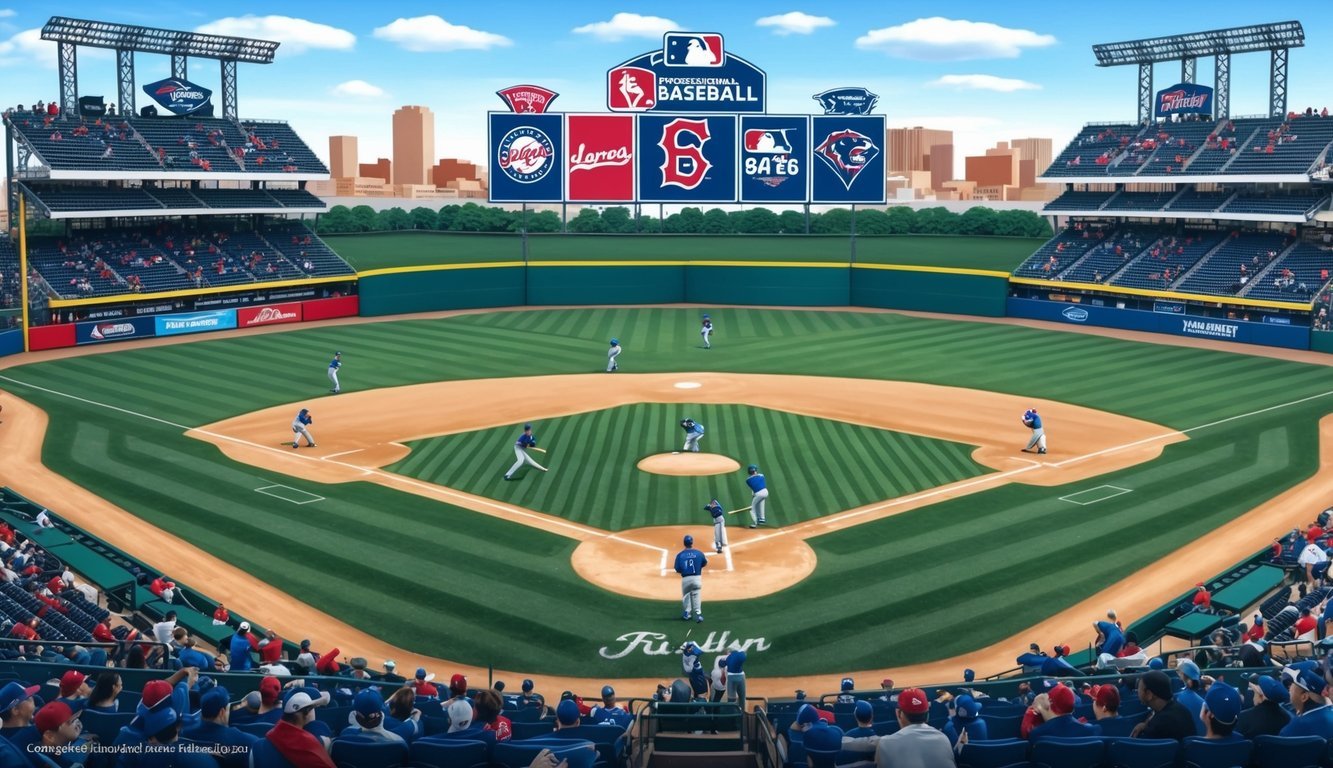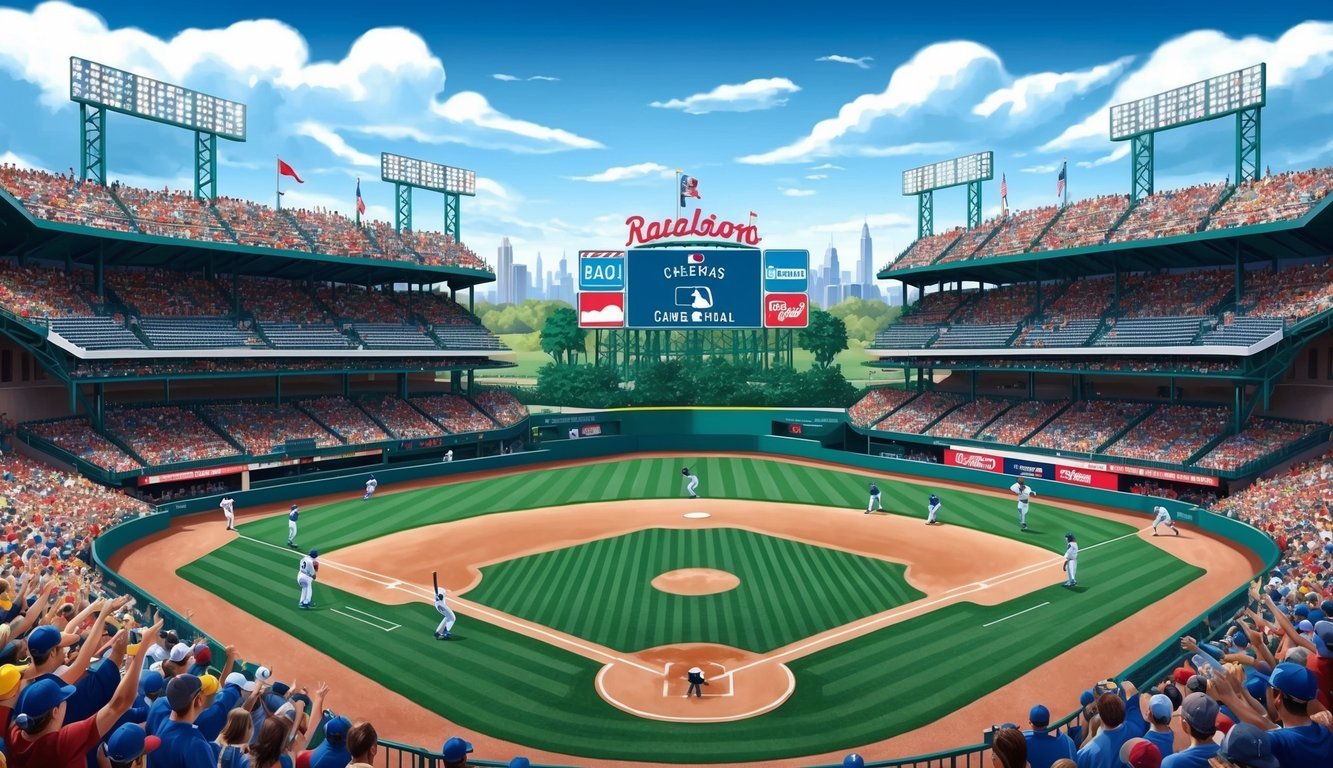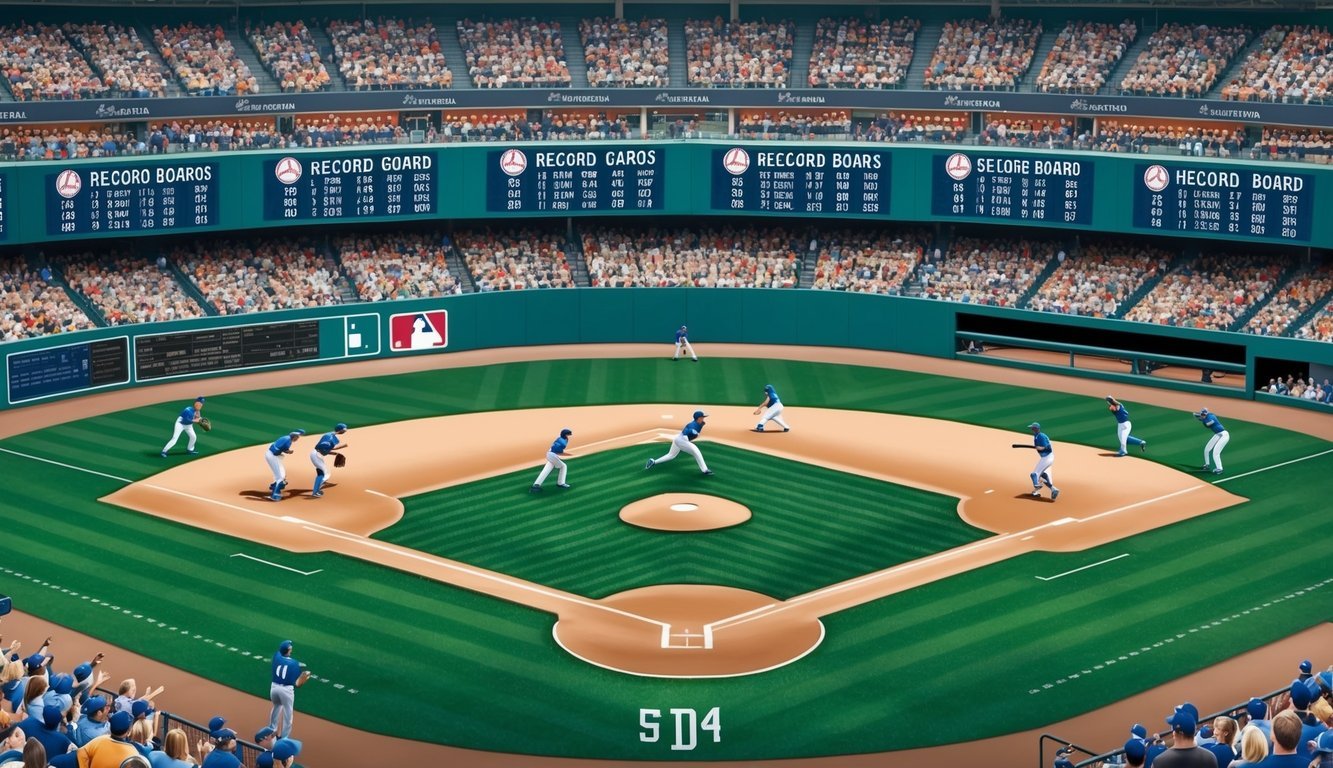Baseball has captivated fans for generations as America’s national pastime.
This beloved bat-and-ball game combines skill, strategy, and athleticism on the diamond. Baseball’s rich history spans over 150 years and is filled with fascinating facts, records, and traditions that have shaped its enduring legacy.
From its humble beginnings to becoming a global phenomenon, baseball has produced legendary players, iconic moments, and quirky trivia.
The game’s unique rules and statistics provide endless fodder for fans to analyze and debate.
As we explore some intriguing baseball facts, both casual fans and die-hard enthusiasts alike will gain a deeper appreciation for this timeless sport.
From record-breaking performances to bizarre superstitions, the world of baseball never fails to surprise and delight those who love the game.
The History and Evolution of Baseball
Baseball’s journey from its early origins to becoming America’s national pastime is a tale of innovation, cultural impact, and unforgettable moments.
The sport’s evolution reflects the changing face of society and has produced legendary figures who transcend the game itself.
From Rounders to Baseball
Baseball’s roots can be traced back to bat-and-ball games played in England, particularly rounders.
In 1744, John Newbery’s “A Little Pretty Pocket-Book” featured a woodcut of “base-ball,” providing an early reference to the sport.
The game evolved in North America throughout the 18th and 19th centuries.
Abner Doubleday was long credited with inventing baseball in Cooperstown, New York in 1839, but this myth has since been debunked.
Alexander Cartwright is now recognized as a key figure in formalizing the rules of modern baseball in 1845.
His New York Knickerbocker Baseball Club established many of the game’s fundamental principles.
The Creation of Major League Baseball
The National League, founded in 1876, marked the beginning of professional baseball.
The American League followed in 1901, leading to the first World Series in 1903.
Early powerhouse teams included the Boston Braves, Chicago White Sox, and New York Yankees.
The Cincinnati Reds, St. Louis Cardinals, and New York Giants also played significant roles in shaping the league’s early years.
The sport faced challenges, including the 1919 Black Sox scandal.
However, it emerged stronger, with the appointment of the first commissioner and the implementation of stricter regulations.
Iconic Moments and Figures
Babe Ruth revolutionized baseball in the 1920s with his powerful hitting, becoming the sport’s first superstar.
His move from the Boston Red Sox to the New York Yankees sparked the infamous “Curse of the Bambino.”
Jackie Robinson broke the color barrier in 1947, joining the Brooklyn Dodgers (now Los Angeles Dodgers) and paving the way for integration in baseball.
Other legendary players like Honus Wagner, Ty Cobb, and Willie Mays left indelible marks on the game.
The Baseball Hall of Fame in Cooperstown, established in 1936, honors these greats and preserves the sport’s rich history.
Modern era highlights include Hank Aaron breaking Ruth’s home run record in 1974 and Cal Ripken Jr.’s incredible streak of 2,632 consecutive games played.
Rules of the Game
Baseball has a unique set of rules that govern gameplay.
These rules cover everything from the layout of the field to how points are scored and the role of officials in enforcing regulations.
The Baseball Diamond and Positions
The baseball diamond is a square infield with 90-foot baselines.
Four bases mark the corners: home plate, first, second, and third base.
The pitcher’s mound sits in the center.
Nine players take the field for the defensive team:
- Pitcher
- Catcher
- First baseman
- Second baseman
- Third baseman
- Shortstop
- Left fielder
- Center fielder
- Right fielder
The offensive team sends batters to home plate one at a time.
Their goal? Hit the ball and advance around the bases to score runs.
Scoring and Runs
A run is scored when a player completes a circuit of the bases, touching each in order.
The team with the most runs after nine innings wins the game.
Ways to score include:
- Home runs (hitting the ball out of the park)
- Base hits followed by advancing on subsequent plays
- Walks with bases loaded
- Sacrifice flies
Games can go into extra innings if tied after nine.
Each team gets a chance to bat in these additional frames until a winner emerges.
The Role of the Umpire
Umpires are crucial to baseball, enforcing rules and making key decisions.
The home plate umpire calls balls and strikes, determining if pitches are in the strike zone.
Other umpire responsibilities:
- Calling players safe or out on the bases
- Ruling on fair/foul balls
- Ejecting players or coaches for misconduct
Umpires use hand signals to communicate their calls clearly.
Their decisions can significantly impact the outcome of a game, making their role both important and sometimes controversial.
Major Leagues and Teams

Major League Baseball consists of two leagues and 30 teams spread across the United States and Canada.
These organizations have rich histories and fierce rivalries that captivate fans.
One of the most notable rivalries is Chicago’s baseball team rivalry, which features the long-standing competition between the Chicago Cubs and the Chicago White Sox.
This fierce rivalry not only divides the city but also creates a vibrant atmosphere during matchups, drawing in fans from both sides and igniting discussions that echo throughout the season.
As teams battle for dominance, the history and passion behind these games only add to the allure of baseball.
American League vs. National League
The American League (AL) and National League (NL) form the foundation of MLB.
Established in 1901 and 1876 respectively, these leagues have distinct identities.
The AL uses the designated hitter rule, while NL pitchers traditionally bat.
Each league has 15 teams divided into East, Central, and West divisions.
AL powerhouses include the New York Yankees and Boston Red Sox.
The NL boasts historic franchises like the Chicago Cubs and St. Louis Cardinals.
Interleague play, introduced in 1997, allows AL and NL teams to face off during the regular season.
Notable Baseball Clubs
Several MLB teams have left indelible marks on baseball history.
The New York Yankees lead with 27 World Series titles.
The Boston Red Sox broke the “Curse of the Bambino” in 2004 after an 86-year championship drought.
The Chicago Cubs ended their 108-year World Series drought in 2016.
Other storied franchises include:
- San Francisco Giants
- Los Angeles Dodgers
- Philadelphia Phillies
- Detroit Tigers
The Toronto Blue Jays represent Canada as MLB’s only non-U.S. team.
World Series and Championships
The World Series, MLB’s championship event, pits the AL and NL pennant winners against each other.
First played in 1903, it has become an American sports institution.
The Fall Classic, as it’s known, is a best-of-seven series that captures national attention.
Notable World Series moments include:
- Babe Ruth’s “Called Shot” (1932)
- Don Larsen’s perfect game (1956)
- Bill Mazeroski’s walk-off home run (1960)
- Kirk Gibson’s dramatic pinch-hit homer (1988)
The team with the most regular-season wins doesn’t always triumph.
Underdogs like the 1969 “Miracle Mets” have shocked baseball fans with unexpected championship runs.
Baseball Culture and Impact

Baseball has woven itself into the fabric of society, shaping cultural norms and inspiring art forms.
Its influence extends far beyond the diamond, touching lives across America and around the world.
Baseball in American Society
Baseball earned its moniker as the “national pastime” through its deep roots in American culture.
The sport has been a constant companion through times of war, economic hardship, and social change.
President William Howard Taft started the tradition of throwing out the first pitch in 1910, cementing baseball’s connection to the highest office in the land.
Ballparks became gathering places for communities, fostering a sense of shared identity.
The game’s leisurely pace allowed for socializing and storytelling, creating bonds between generations.
Baseball cards, once packaged with tobacco and gum, became cherished collectibles.
The sport has also played a role in social progress.
Jackie Robinson’s breaking of the color barrier in 1947 was a pivotal moment in the civil rights movement.
Influence Beyond the US
While baseball is quintessentially American, its appeal has spread globally.
Japan embraced the sport in the late 19th century, developing its own professional leagues and unique fan culture.
Today, Japanese stars like Shohei Ohtani dazzle fans with their skill on both sides of the Pacific.
Cuba and other Latin American countries have produced countless MLB stars, with baseball becoming an integral part of their national identities.
The sport has taken root in various Asian countries, each adding its own flair to the game.
Baseball was an Olympic sport from 1992 to 2008, and after a brief hiatus, returned for the Tokyo 2020 Games.
This international stage has further boosted the sport’s global profile.
Baseball and the Arts
The rhythms and traditions of baseball have inspired countless artists across various mediums.
Literature has given us classics like Bernard Malamud’s “The Natural” and W.P. Kinsella’s “Shoeless Joe,” which became the film “Field of Dreams.”
Music and baseball have a special connection. “Take Me Out to the Ball Game,” written in 1908, remains an enduring anthem sung during the seventh-inning stretch at ballparks nationwide.
Numerous popular songs reference the sport, from John Fogerty’s “Centerfield” to Bruce Springsteen’s “Glory Days.”
Visual artists have captured the grace and drama of the game.
Norman Rockwell’s baseball-themed paintings evoke nostalgia for America’s simpler times.
Contemporary artists continue to find inspiration in the sport’s unique blend of action and contemplation.
Notable Players and Records

Baseball has produced many extraordinary athletes who have left an indelible mark on the sport.
Their remarkable achievements have set records that continue to inspire and amaze fans today.
Legends of the Sport
Babe Ruth stands as perhaps the most iconic figure in baseball history.
Known as the “Sultan of Swat,” Ruth transformed from a talented pitcher to a legendary slugger.
His 714 career home runs set a standard that lasted for decades.
Jackie Robinson broke the color barrier in 1947, becoming the first African American to play in Major League Baseball.
His courage and skill paved the way for integration in the sport.
Honus Wagner, nicknamed “The Flying Dutchman,” dominated the game in the early 1900s.
His .328 career batting average remains one of the highest in MLB history.
The Griffey family made its mark with both Ken Griffey Sr. and Ken Griffey Jr. playing simultaneously for the Seattle Mariners in 1990.
The younger Griffey became one of the most popular players of his era, known for his smooth swing and spectacular catches.
Record-Breaking Achievements
Baseball’s rich history is filled with incredible feats.
Here are some notable records:
- Most career home runs: 762 (Barry Bonds)
- Highest career batting average: .366 (Ty Cobb)
- Longest hitting streak: 56 games (Joe DiMaggio)
- Fastest recorded pitch: 105.8 mph (Aroldis Chapman)
These records showcase the exceptional talent and dedication of players throughout different eras.
Some have stood for decades, while others face challenges from modern athletes pushing the boundaries of performance.
The Hall of Fame Inductees
The National Baseball Hall of Fame in Cooperstown, New York, honors the game’s greatest players, managers, and contributors.
People consider induction the highest honor in baseball.
Notable inductees include:
- Babe Ruth (1936)
- Jackie Robinson (1962)
- Hank Aaron (1982)
- Nolan Ryan (1999)
- Ken Griffey Jr. (2016)
Henry Chadwick, often called the “Father of Baseball,” was inducted as a pioneer for his role in developing the game’s statistics and rules.
His innovations, like the box score, continue to shape how fans understand and enjoy baseball today.
The Hall of Fame preserves baseball’s rich history and celebrates the extraordinary individuals who have shaped America’s pastime.
